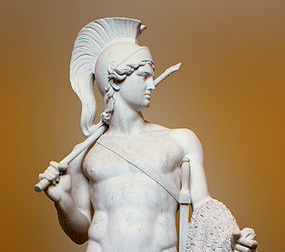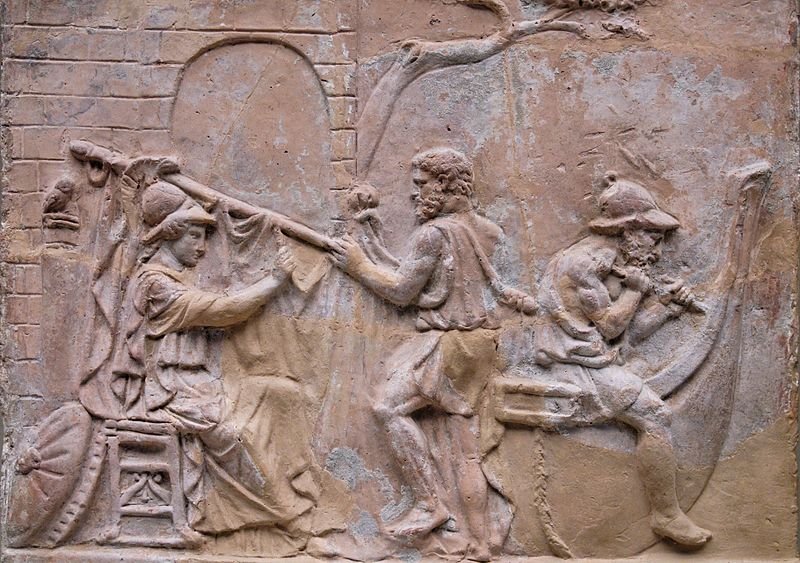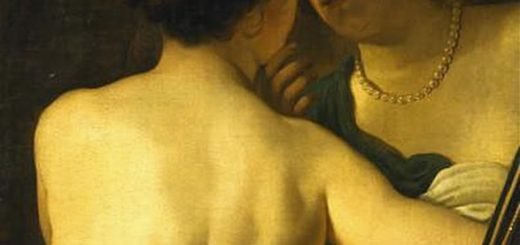The Argo: Ship Used by Jason and the Argonauts
The Argo is a significant element in Greek mythology, known as the ship used by the hero Jason and his crew of Argonauts on their quest to retrieve the Golden Fleece from distant Colchis.
READ MORE: Most Renowned Heroes in Greek Mythology

The crew of the Argo, known as the Argonauts, consisted of various heroes and demigods, including Hercules, Orpheus, Castor and Pollux, and their leader, Jason. The Argo (c. 1500–1530), painting by Italian painter Lorenzo Costa
Before delving into the myths surrounding the ship, it must be noted that much of what we know about the Argos and by extension Jason and the Argonauts comes from the Argonautica, a 3rd-century BC work by Greek author Apollonius of Rhodes.
Origin of the name
According to Latin writer and statesman Cicero, the name the ship came from the word “Argives”, which is a term used for the people of Argos in the Peloponnese region.
However, ancient Greek historian Diodorus of Sicily (also known as Diodorus Siculus) stated in one of his works that it was believed the name of the ship came from the Greek word for ‘rapid’ or ‘speed’.
Builder of the Argo
The Argo was said to be built by the shipbuilder Argus with the help of Athena, the goddess of wisdom, craft, and warfare. The ship was made from oak and was reportedly the largest ship of her time. It was named “Argo” in honor of her builder.
Design and features of the ship
Argos designed the ship with a sail, making it reach neck-breaking speeds, according to the myths. According Apollonius Rhodius, the ship was fitted with 50 oars.
The materials used in constructing the ship came from many parts of Greece, including Mount Pelion in southeastern part of Thessaly, and Dodona in northwestern Greece. The former was generally believed as the place where the ship was built.
Pine trees and fir-wood are just some of the materials cited in the myths.
Typically, she was envisioned akin to a Greek warship or galley, with many speculating that she was the inaugural ship of this design to embark on an expedition across the vast open seas.

Goddess Hera and the Argo
Hera, the queen of the gods in Greek mythology, is often depicted as a protector of heroes and a supporter of heroic endeavors. She played a significant role in the voyage of the Argo during their quest for the Golden Fleece. In the myths, the Queen of the Olympians offered protection and guidance to the Argonauts at various stages of their journey.
According to some versions of the myth, Hera had a direct influence on the construction of the Argo. A beam from the sacred forest of Dodona, which could speak the language of the gods, was placed in the ship. This beam was said to have been instilled with prophetic powers by Hera herself, and it advised the Argonauts during their journey.

As the wife of Zeus, Hera was one of the most powerful Olympian gods. She played a significant role in the voyage of the Argo, the ship used by Jason and the Argonauts during their quest for the Golden Fleece. After the successful retrieval of the Golden Fleece, Hera continued to watch over Jason and Medea, helping them navigate the challenges they faced on their return journey.
Jason and the Argonauts
The crew of the Argo was made up of a group of heroes and demigods, who were collectively known as the Argonauts. They included notable figures like Hercules, Orpheus, Castor and Pollux, and of course, Jason, their leader. Each brought their unique abilities and strengths to the mission.

Greek hero Jason
The Argo’s Role and the Quest to retrieve the Golden Fleece
Jason was tasked with retrieving the Golden Fleece, the golden wool of a sacred ram, to claim his rightful place as king of Iolcos. The Golden Fleece was located in the distant land of Colchis, under the guard of a dragon.
The Argo carried the Argonauts through various adventures across the sea, encountering mythical creatures, hostile forces, and divine interventions. The ship herself was also said to have been blessed by Athena and had the power of prophecy, further aiding the Argonauts on their journey.
The Argo and Poseidon
With Poseidon being the most famous sea deity in the Greek pantheon, it came as no surprise when the Argo was consecrated to him. The consecration was at the Isthmus of Corinth. The ship was also dedicated to other Greek gods, including Hera and Athena.
The beam from the Argo that killed Jason
Many years post the successful retrieval of the Golden Fleece, a beam tragically plummeted from the once glorious ship, ending Jason’s life while he slumbered beneath it. Following his earthly demise, he was transformed into a celestial entity, becoming the constellation known as Argo Navis.
Interpretation
The story of the Argo and the Argonauts is one of the most enduring tales in Greek mythology, symbolizing a heroic quest and the trials and tribulations that come with it. The Argo itself stands as a symbol of human endeavor and divine intervention combined.
Other interesting myths about the Argo

The Argo carried the Argonauts through their perilous journey to Colchis, a land at the eastern edge of the Black Sea, where the Golden Fleece was kept. The journey was filled with numerous mythical encounters and divine interventions. Image: Roman terracotta relief of Athena (left) with Argus (right) and Tiphys building the Argo (British Museum)
In addition to Apollonius Rhodius’s account, Latin author Pliny the Elder (AD 23/24 – AD 79) provides some bit of description of how the Argos was built as well as its fate. Pliny mentioned that some authors say the ship entered the Adriatic Sea near Tergeste via an unidentified river, while others believe it was manually transported across the Alps, after traveling the Ister and Savus rivers, reaching Nauportus between Emona and the Alps.
Here are some more myths about the Argo:
- Argus, the builder of the Argos, is not to be confused with Argus Panoptes, the hundred-eyed giant who was killed by Greek god Hermes.
- In one account of the myth, the Argo was built with the help of Athena, the Greek goddess of wisdom and strategic warfare.
- As lead steersman of the Argonauts, Tiphys benefited enormously from the knowledge Athena imparted to him about the Argo. It’s believed that Athena showed Tiphys how to attach the sails to the mast.
- Having received support from Greek deities during the construction, the Argo became a really prized ship. In the myths, it’s said that vessel was the first to sail the seas. Upon her completion, the ship was praised by Dionysus, the Greek god of wine and religious ecstasy.
- In addition to Hera offering guidance to the Argo and Jason’s Argonauts, figures like the Nereids and Triton (a Greek god of the sea) helped the Argo steer clear of rough waters.
- According to Greek philosopher Aristotle, the Argo abandoned Greek hero Heracles (Hercules in Roman mythology) because he was too heavy.

Frequently asked questions

The Argo was a ship used by Jason and the Argonauts in their quest to retrieve the Golden Fleece from Colchis. Image: 1664 Etching by Balthasar Moncornet
Who were the Argonauts?
The Argonauts were a group of heroes in Greek mythology who accompanied Jason on his voyage. Notable members included Hercules, Orpheus, Castor and Pollux, and Atalanta, among others.
Why was the ship named Argo?
The ship was named after its builder, Argus, who crafted it under the guidance of Athena.

Image: Argus building the Argo, with the help of Greek goddess Athena; image by Christopher Wordsworth. Greece Pictorial, Descriptive, & Historical, and a History of the Characteristics of Greek Art, London, John Murray, 1882.
What was special about the Argo?
Apart from being the ship of the legendary Argonauts, Athena fitted the Argo with a piece of the sacred Dodonian oak, which had the power to speak and prophesy.
Where did the Argo’s journey take place?
The primary destination was Colchis, a land located on the eastern edge of the Black Sea, but the journey saw the Argonauts encounter numerous adventures and challenges in various locations.
What was the Golden Fleece?
It was the fleece of a golden ram and a symbol of authority and kingship. King Pelias set its retrieval as a task for Jason, which led to the voyage of the Argo.
Did Jason and the Argonauts succeed in retrieving the Golden Fleece?
Yes, with the help of the sorceress Medea, who fell in love with Jason, they were able to secure the Golden Fleece and return to Thessaly.
Who was the main antagonist during the quest for the Golden Fleece?
King Aeëtes of Colchis, the keeper of the fleece, posed significant challenges for Jason, especially when Jason sought to claim it.

The tale of the Golden Fleece embodies the trials and tribulations heroes must undergo in their quests, the perils of ambition, and the often blurred lines between right and wrong. Image: Depiction of the Golden Fleece, Jason, and Medea
Did the Argonauts face challenges during their journey?
Absolutely. The journey was perilous, with the Argonauts encountering numerous mythical creatures, challenges, and obstacles, such as the clashing rocks (Symplegades), the harpies, and the bronze giant Talos.
What happened to the Argo after the quest?
After successfully returning with the Golden Fleece, the Argo was consecrated to Poseidon and left to rot. Later legends suggest that it was transformed into a constellation.




























Who was Jason’s closest friend? And who was the first mate on the Argo?